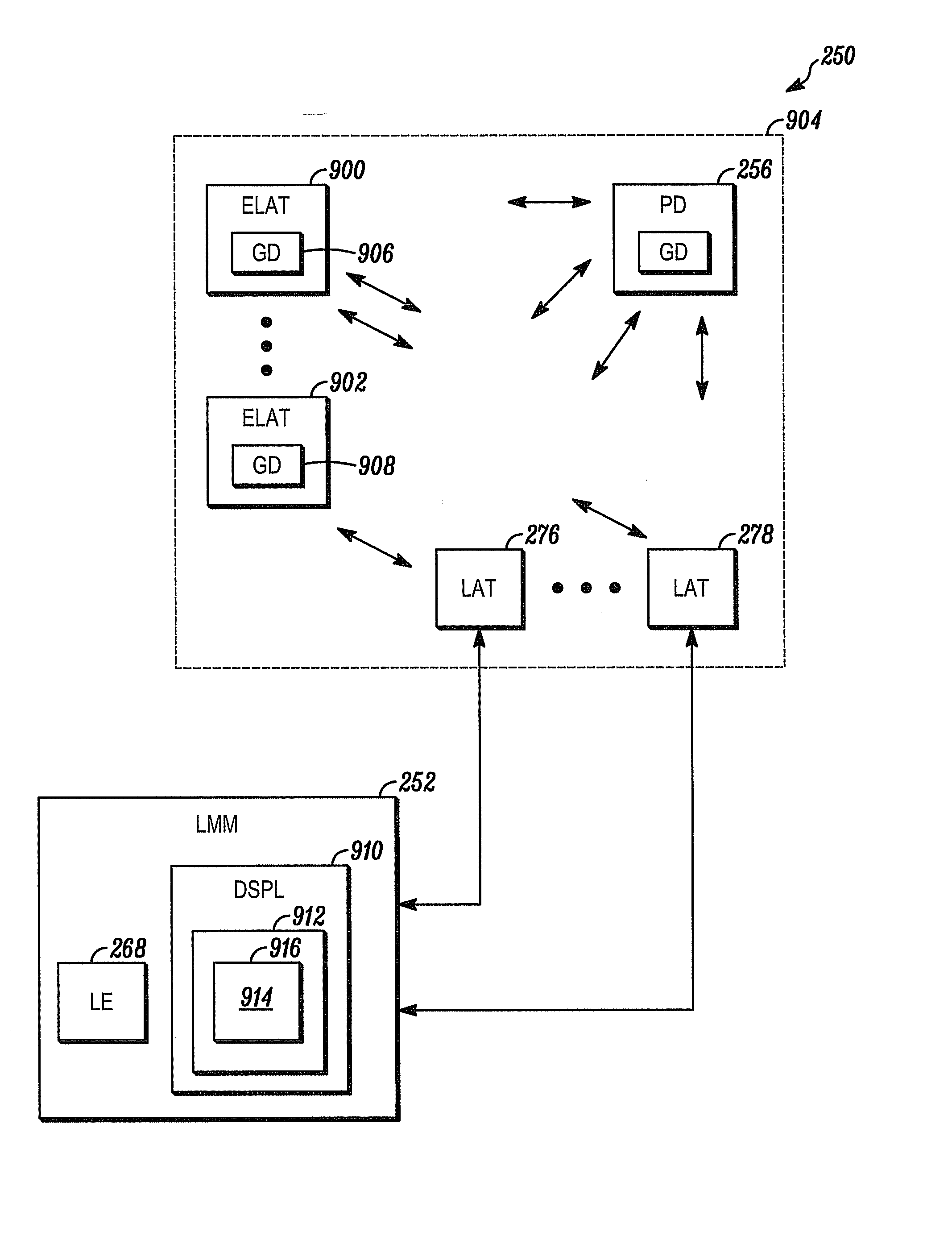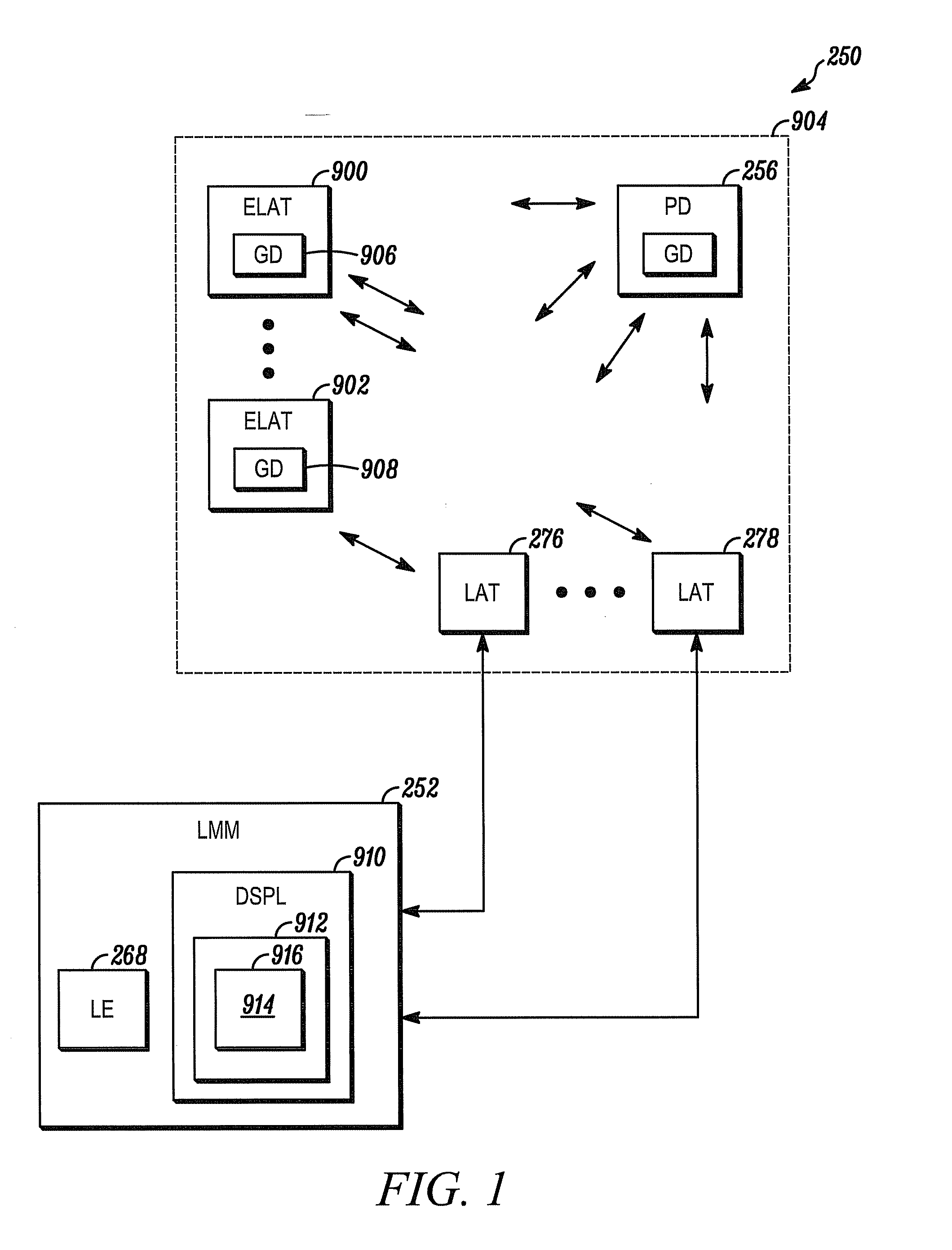Wireless Location-Based System for Detecting Hazardous Conditions
a location-based system and hazardous conditions technology, applied in the field of sensing devices, can solve the problems of expensive wiring, inability to adapt to changing conditions, and the type of system is not portable or adaptable to changing conditions,
- Summary
- Abstract
- Description
- Claims
- Application Information
AI Technical Summary
Problems solved by technology
Method used
Image
Examples
Embodiment Construction
[0008]FIG. 1 depicts a gas detection system 250 shown generally in accordance with an illustrated embodiment of the invention. Included within the gas detection system 250 may be a number of portable gas detectors (transceivers) 256. Also included within the gas detection system 250 is a number of location anchor transceivers 276, 278 connected to a location manager module 252.
[0009]It may be noted that not all location anchor transceivers 276, 278 may be connected to the location manager module 252. Some of the location anchor transceivers 276, 278 may be used only to provide probe responses for location purposes but are not used to relay information to the location manager module 252.
[0010]The location anchor transceivers 276, 278 that are connected to the location manager module 252 may wirelessly receive gas readings and location information from the portable gas detectors 256. The location anchor transceivers may forward this information to the location manager. The location ma...
PUM
 Login to View More
Login to View More Abstract
Description
Claims
Application Information
 Login to View More
Login to View More - R&D
- Intellectual Property
- Life Sciences
- Materials
- Tech Scout
- Unparalleled Data Quality
- Higher Quality Content
- 60% Fewer Hallucinations
Browse by: Latest US Patents, China's latest patents, Technical Efficacy Thesaurus, Application Domain, Technology Topic, Popular Technical Reports.
© 2025 PatSnap. All rights reserved.Legal|Privacy policy|Modern Slavery Act Transparency Statement|Sitemap|About US| Contact US: help@patsnap.com


